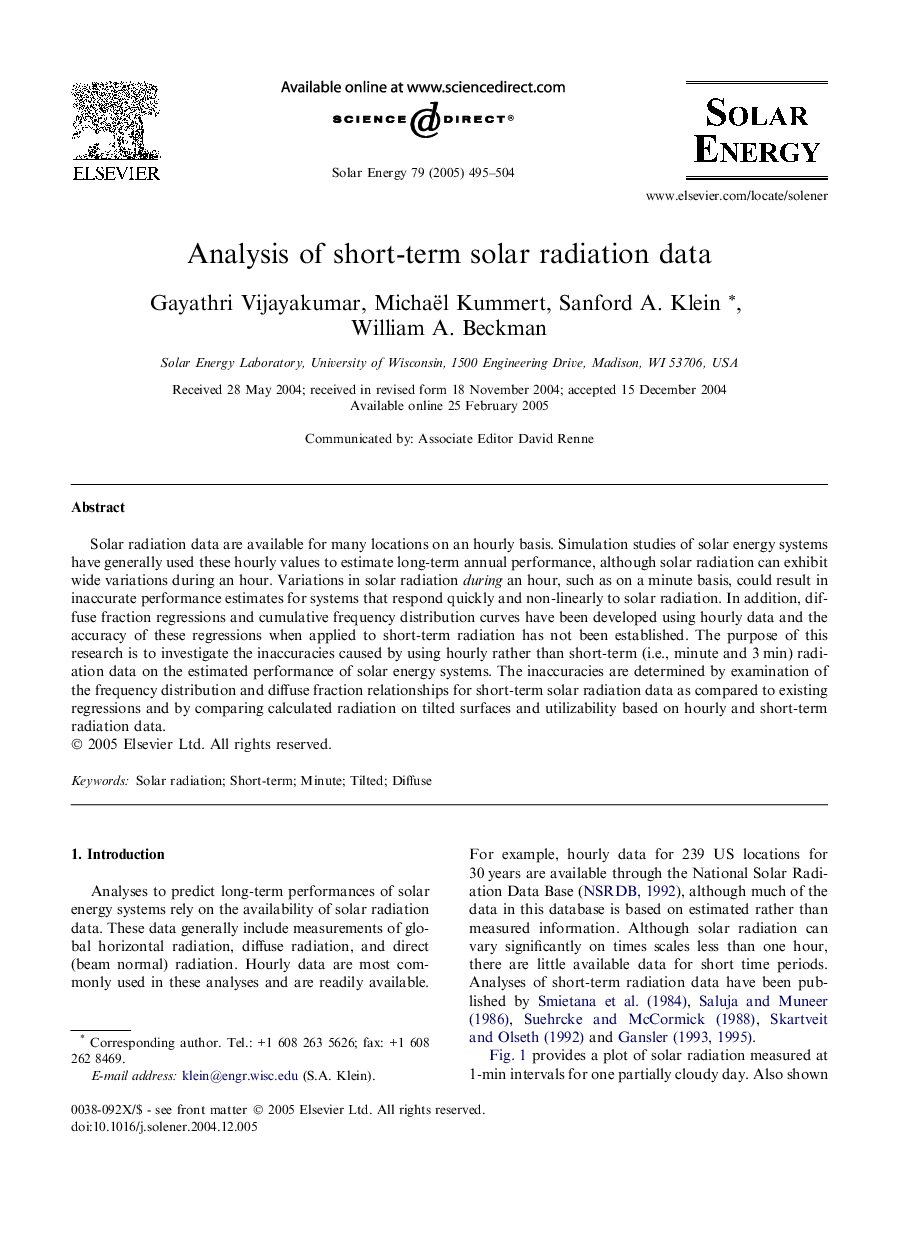| Article ID | Journal | Published Year | Pages | File Type |
|---|---|---|---|---|
| 10643139 | Solar Energy | 2005 | 10 Pages |
Abstract
Solar radiation data are available for many locations on an hourly basis. Simulation studies of solar energy systems have generally used these hourly values to estimate long-term annual performance, although solar radiation can exhibit wide variations during an hour. Variations in solar radiation during an hour, such as on a minute basis, could result in inaccurate performance estimates for systems that respond quickly and non-linearly to solar radiation. In addition, diffuse fraction regressions and cumulative frequency distribution curves have been developed using hourly data and the accuracy of these regressions when applied to short-term radiation has not been established. The purpose of this research is to investigate the inaccuracies caused by using hourly rather than short-term (i.e., minute and 3Â min) radiation data on the estimated performance of solar energy systems. The inaccuracies are determined by examination of the frequency distribution and diffuse fraction relationships for short-term solar radiation data as compared to existing regressions and by comparing calculated radiation on tilted surfaces and utilizability based on hourly and short-term radiation data.
Related Topics
Physical Sciences and Engineering
Energy
Renewable Energy, Sustainability and the Environment
Authors
Gayathri Vijayakumar, Michaël Kummert, Sanford A. Klein, William A. Beckman,
